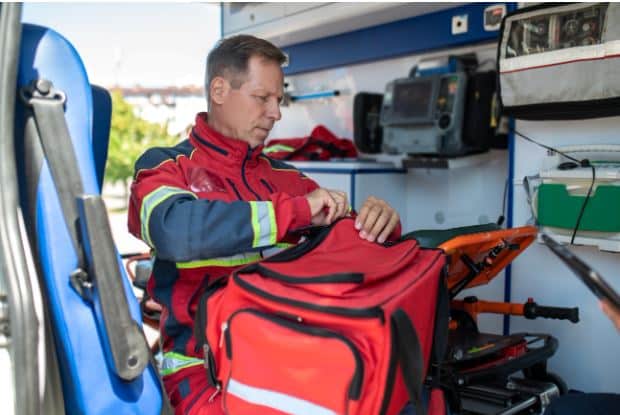
How to Organize Your EMS Jump Kit for Maximum Efficiency
Whether you’re a first responder or not, you will likely encounter an emergency medical situation at one time or another. Unfortunately, such high-stress situations require quick, competent responses. With some of the most common emergencies, including airway obstructions, chest pain, and seizures, having the right medical supplies on hand can be the difference between life and death.
That’s why having a well-organized EMS jump kit is so important. These kits contain the essential medical supplies needed for a variety of emergency medical situations.
So how can you organize your jump kit for maximum efficiency? Below are some tips for organizing your EMS jump kit:
Categorize and Group Items
Divide your jump kit into sections or compartments based on the type of items. For example, you can have separate areas for airway management supplies, trauma equipment, medications, and IV supplies. This will make it easier to locate specific items when needed.
Prioritize Essential Items
Identify the most frequently used and critical items in your jump kit and keep them easily accessible. These may include items like gloves, bandages, airway adjuncts, and basic medications such as epinephrine, opioid analgesics, and antihypertensives. Place these items in a designated section or pocket near the top of your jump kit for quick retrieval.
Use Clear Pouches or Containers
Transparent pouches or containers allow you to see the contents without opening them fully. This helps save time during high-pressure situations when every second counts. Use clear plastic bags, pouches, or containers to store smaller items like syringes, dressings, and tape.
Arrange Items Logically
Organize your jump kit in a logical order, keeping in mind the flow of patient care. Place items that are used first at the top or in the most easily accessible section. For example, you may want airway management supplies and basic assessment tools near the top, followed by medications, IV supplies, and more specialized equipment such as oxygen delivery systems.
Utilize Labeling and Color-Coding
Labeling different sections or compartments of your jump kit can help you quickly locate items. Consider using color-coded labels or tags to differentiate between various categories of supplies. For example, you can use red for trauma-related items, blue for airway management, and green for medications.
Customize Your Kit
EMS providers’ needs may vary based on their specific protocols and environment. For example, a wilderness EMS provider may need more supplies for fractures and environmental injuries than an urban provider. Consider any special equipment or medications you may require, and customize your jump kit accordingly. You can also contact an EMS supplier for a customized jump kit. At Coast Biomedical Equipment, our team of EMS experts can help you create a jump kit that meets your specific needs.
Secure and Stabilize Items
Use elastic loops, Velcro straps, or compartments with dividers to secure and stabilize items within your jump kit. This will prevent them from shifting or becoming disorganized during transportation or when accessing other items. It also helps to reduce the risk of breakage or damage to delicate equipment.
Bottom Line
Remember, maintaining an organized jump kit is an ongoing process. Regularly assess and refine your organization system based on your experience and feedback from your team. The goal is to have a jump kit that allows quick access to essential items, enabling you to provide efficient care to your patients in emergency situations.
Are you in need of medical emergency kit supplies? Look no further than Coast Biomedical Equipment! We carry a wide variety of items to help you create a jump kit that meets all your needs. Visit our website or give us a call today to learn more about the medical emergency supplies we have in stock today.




